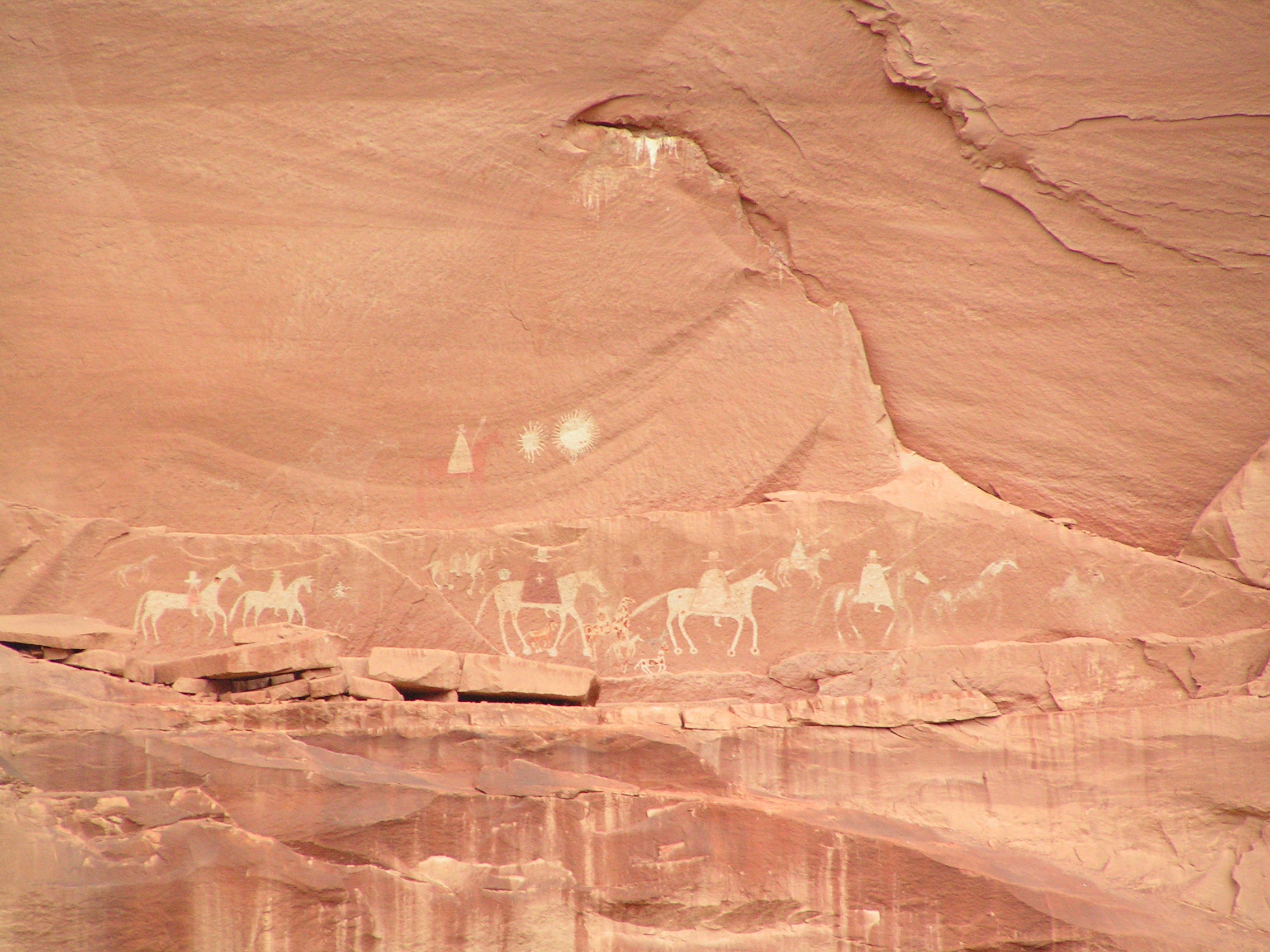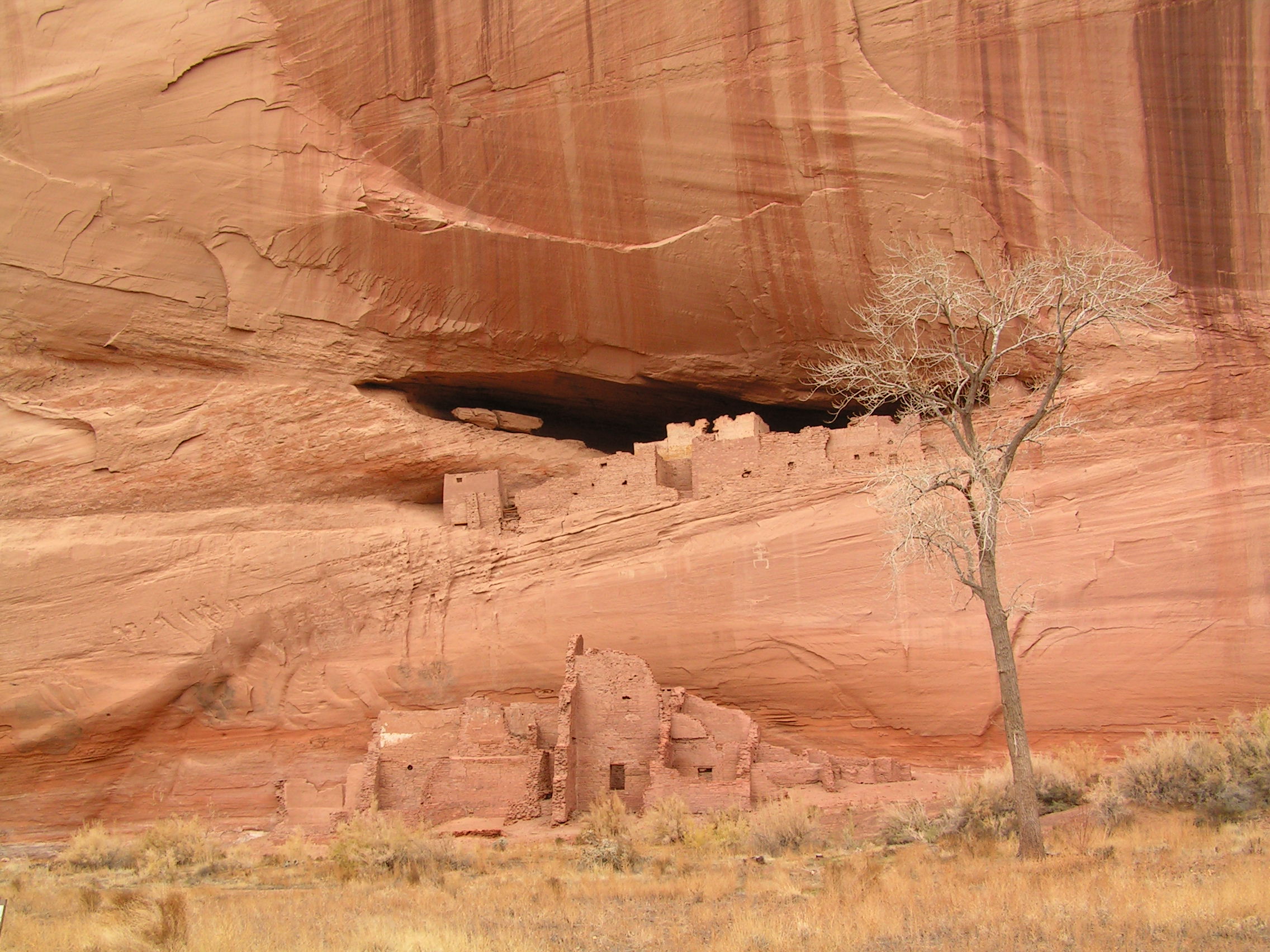Nothing much has been happening the past couple of days, so here are some pictures I took in at Canyon de Chelly last Christmas (as always, click to embiggen):
 This rock art panel was obviously painted after the Spanish arrived in the area. According to our guide, it depicts the military expedition of Antonio de Narbona in 1805, in which a large number of Navajos were killed or taken captive.
This rock art panel was obviously painted after the Spanish arrived in the area. According to our guide, it depicts the military expedition of Antonio de Narbona in 1805, in which a large number of Navajos were killed or taken captive.
 This should be immediately recognizable to any Southwestern archaeology geeks reading my blog. For the rest of you, it’s a picture of the well known White House Ruin, probably the most visually impressive ruin in Canyon de Chelly. It was built by a people known today as Anasazi or Ancestral Pueblo.
This should be immediately recognizable to any Southwestern archaeology geeks reading my blog. For the rest of you, it’s a picture of the well known White House Ruin, probably the most visually impressive ruin in Canyon de Chelly. It was built by a people known today as Anasazi or Ancestral Pueblo.
 This is White House Ruin again, this time seen from the canyon rim. Construction of this pueblo began around AD 1050, and it seems to have been occupied for roughly 200 years. Why they left is still very much an open question in archaeology, although many of the current theories tie abandonment of this and other pueblos to changes in climate.
This is White House Ruin again, this time seen from the canyon rim. Construction of this pueblo began around AD 1050, and it seems to have been occupied for roughly 200 years. Why they left is still very much an open question in archaeology, although many of the current theories tie abandonment of this and other pueblos to changes in climate.





